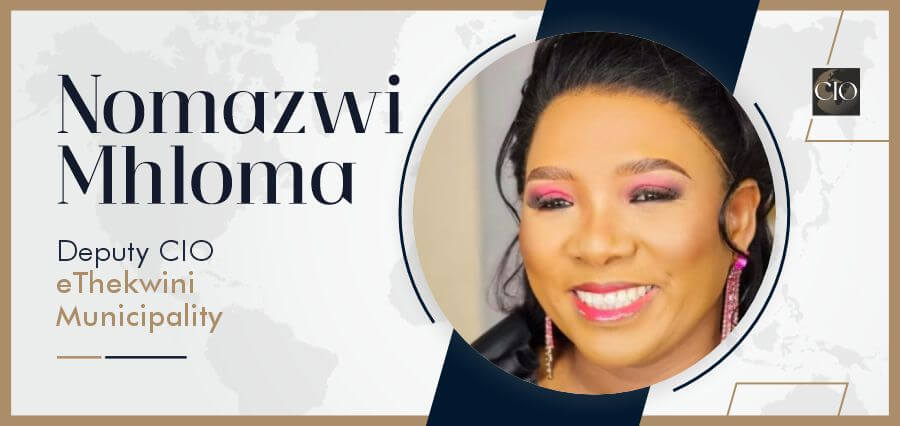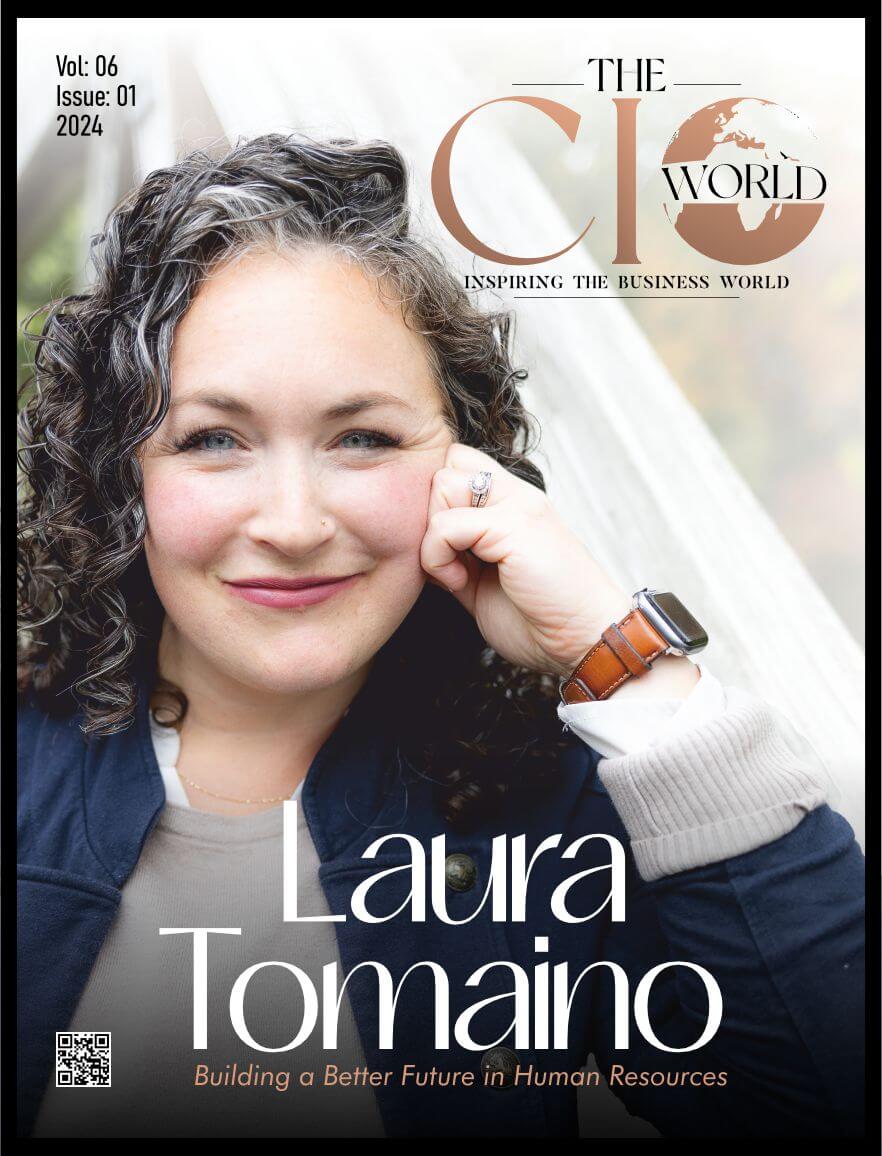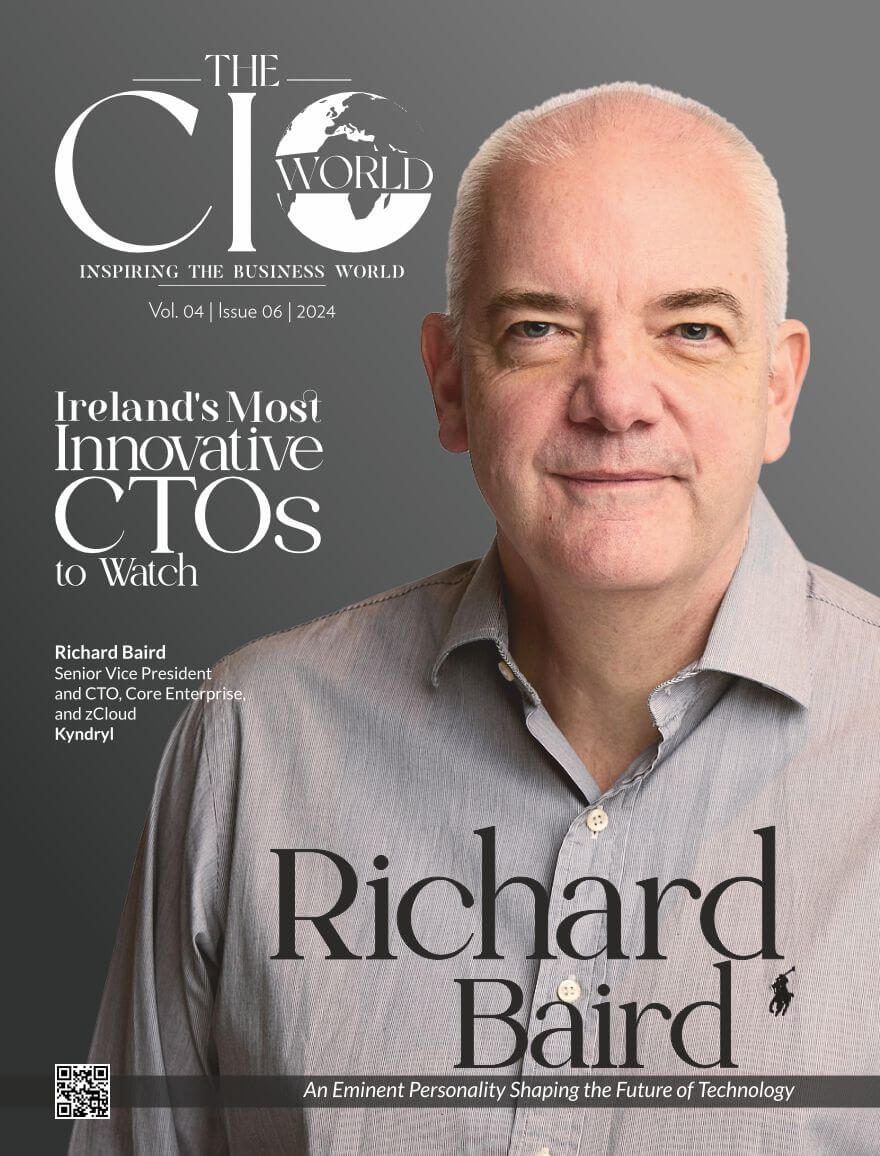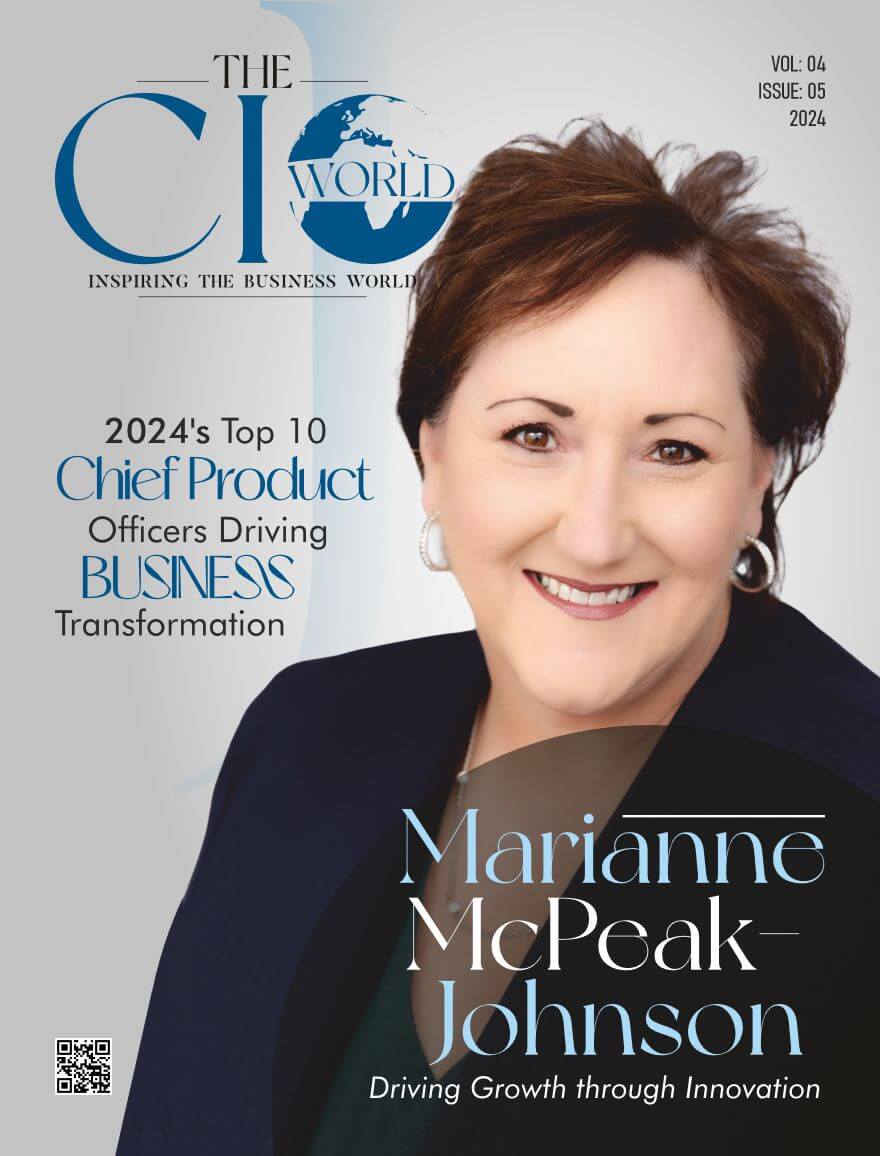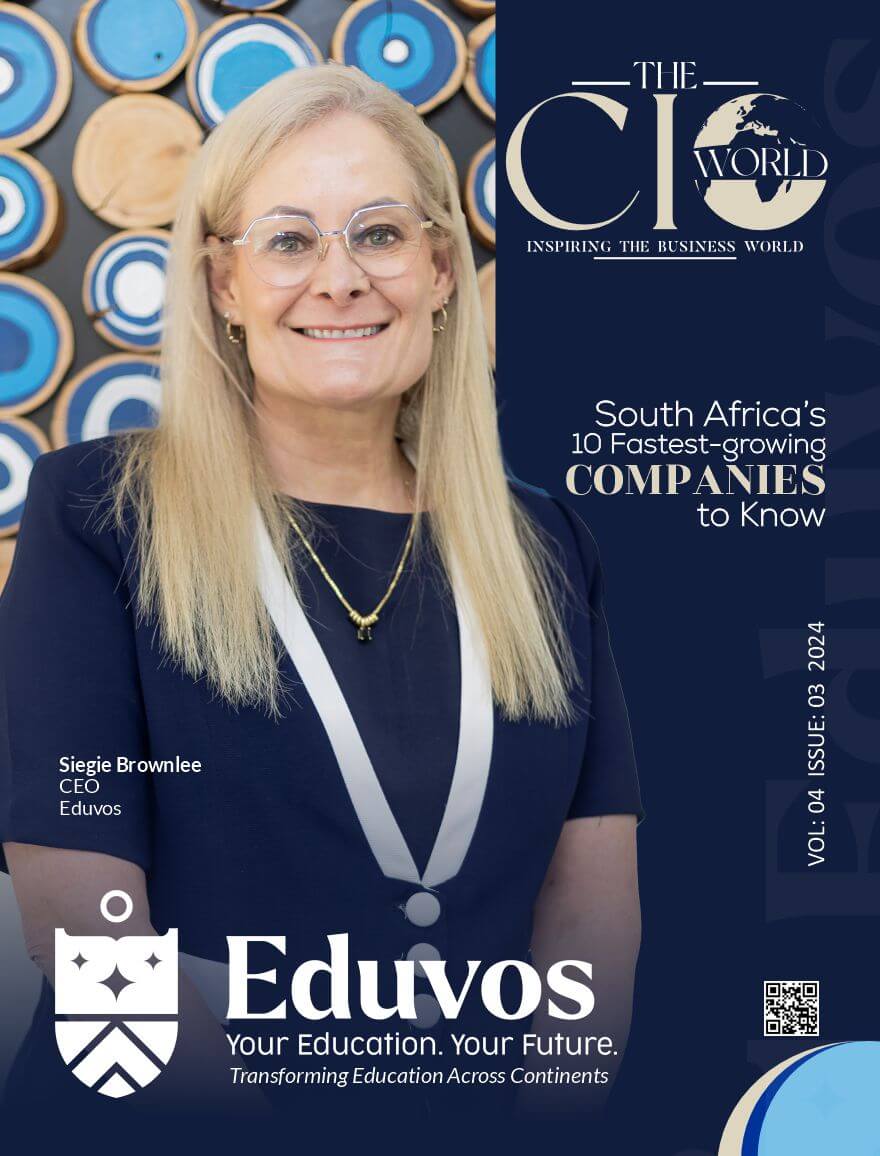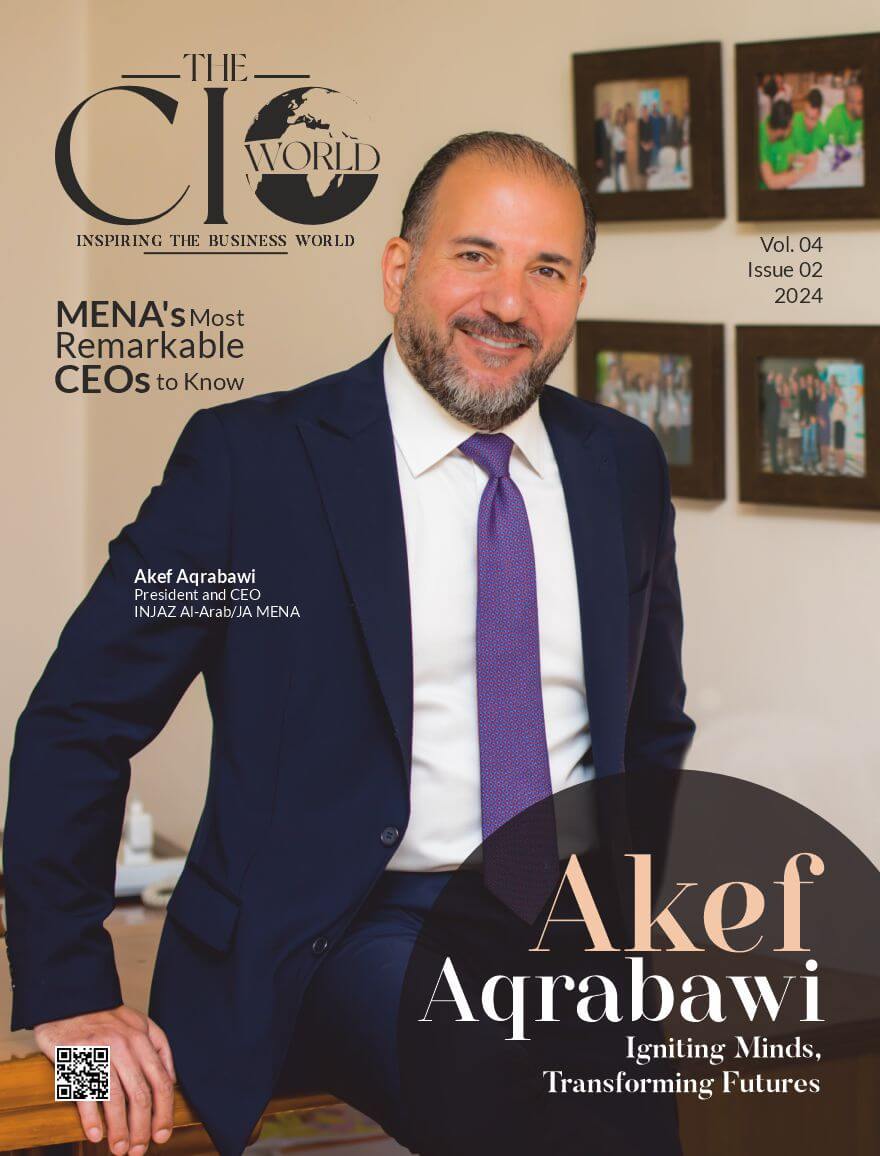Leveraging Transformation for Enhanced Efficiency and Service Delivery in the Public Sector!
In a time of swift technological progress, the topic of whether technology can transform public sector service delivery is a significant one. The rising reliance of societies on digital solutions for routine chores has raised expectations for government services to be more streamlined and effective than before. Can technology in the public sector, however, really meet these expectations?
This question has been a guiding light for Nomazwi Mhloma, the Deputy Chief Information Officer (CIO) at eThekwini Municipality. With a relentless passion for leveraging innovation in IT service management, her journey through the technology sector has been nothing short of transformative.
In her current role at eThekwini Municipality’s Information Management Unit, Mhloma focuses on ICT customer services, spanning Customer Relationship Management, Service Management, and End User Support management. Her career trajectory reflects a deep-seated fascination with the potential of technology to solve complex challenges and enhance efficiency in the public sector.
Mhloma’s journey began with her tenure as an ICT Service Delivery Manager at Transnet, where she honed her skills in IT service management. Her subsequent role as an ICT Campus Manager at the University of Johannesburg further solidified her belief in the transformative power of technology. Now, as the Deputy CIO at eThekwini Municipality, Mhloma is at the forefront of driving digital transformation in one of South Africa’s most dynamic municipalities.
For Mhloma, the opportunity to contribute to the digital transformation of eThekwini Municipality represents more than just a career path; it’s a chance to make a tangible difference in service delivery. Recognizing the pivotal role of technology as a basic instrument in government service delivery, Mhloma is dedicated to harnessing innovation to improve the lives of citizens.
Below are the interview highlights:
Could you give our readers an insight into your company and its inception story?
EThekwini municipality is the third-largest municipality in South Africa. It has 3.9 million residents, according to the latest census, and contributes 34.7% to the province’s population. eThekwini holds a pivotal economic role, boasting a GDP contribution of 59.88%. The city has diversified strengths from manufacturing to tourism and has identified catalytic projects worth R276 billion. Notably, eThekwini received recognition for its COVID-19 response. The vision for the city is to become Africa’s most caring and liveable city, where all citizens live in harmony, guided by core values such as sustainability, economic success, compassion, smart development, and poverty reduction.
As a CIO, what do you consider your primary responsibility in driving the organization’s digital strategy and technology initiatives?
As the Deputy CIO, my primary responsibility is to align technology initiatives with the overall strategic objectives of eThekwini Municipality, ensuring they contribute directly to organizational goals. This involves leading the development and execution of the digital strategy and ensuring that IT projects contribute to the municipality’s goals of improved service delivery, enhanced efficiency, and citizen engagement. I work closely with other leaders to identify opportunities where technology can be a catalyst for positive change and growth. I must champion innovation, manage technology investments to ensure ROI and foster a culture of digital transformation. This involves assessing emerging technologies, mitigating risks, and ensuring collaboration across departments. Ultimately, my role is to leverage technology to enhance operational efficiency, drive business growth, and maintain a competitive edge in the rapidly evolving digital landscape.
Can you share a specific example of a challenging IT project you successfully led, highlighting your problem-solving and leadership skills?
Led the challenging Microsoft 365 Enterprise Agreement project, navigating complexities in negotiation and implementation. Faced issues like varying departmental needs and budget constraints. Employed strategic problem-solving by conducting thorough stakeholder consultations to understand specific requirements. Leveraged effective negotiation skills to reach a favorable agreement with Microsoft, aligning licensing with departmental needs. Demonstrated leadership by coordinating seamlessly between IT, finance, and department heads. Successfully implemented the agreement, optimizing licensing costs while ensuring all departments had access to necessary M365 features. The project showcased my ability to lead complex IT initiatives, negotiate effectively, and ensure alignment with organizational goals.
In your role, how do you prioritize and balance innovation with maintaining the stability and security of the organization’s IT infrastructure?
I prioritize innovation by assessing its potential to align with business goals and enhance efficiency. Simultaneously, I maintain stability and security by implementing robust cybersecurity measures, regular system audits, and compliance checks. Striking a balance involves careful risk assessment, phased implementations, and a responsive incident management framework. This ensures that, while driving innovation, the organization’s IT infrastructure remains resilient, secure, and capable of adapting to emerging challenges.
How do you stay updated on emerging technologies and trends, and how do you ensure your IT team remains well-informed and adaptable?
I continuously analyze online publications, attend webinars, and monitor industry reports to stay abreast of emerging technologies. For my IT team, I foster a culture of continuous learning through regular training sessions, encourage participation in conferences, and provide access to relevant online courses. Additionally, we engage in knowledge-sharing forums to exchange insights and ensure collective adaptability.
Collaboration is crucial in technology leadership. Can you provide an instance where you fostered effective collaboration between IT and other departments to achieve a common goal?
In August 2023, I led and coordinated a transformative Learning Exchange Workshop in collaboration with our Municipal Learning Academy, demonstrating my commitment to effective collaboration in technology leadership. By inviting internal eThekwini departments, provincial and national government stakeholders, as well as private sector representatives, we created a platform for diverse perspectives and insights. The workshop facilitated open discussions on shared challenges and opportunities in technology adoption. Through interactive sessions and collaborative activities, participants gained a deeper understanding of each other’s needs and capabilities. This event not only fostered cross-departmental collaboration but also strengthened partnerships with external stakeholders and encouraged working together as spheres of government and the private sector. As a result, the workshop laid the foundation for ongoing collaboration, leading to shared goals and enhanced technological initiatives.
What methodologies or frameworks do you find most effective in managing IT projects, and why?
PRINCE2 (PRojects IN Controlled Environments) is considered ideal for its structured approach, clear stages, and emphasis on business justification. Its focus on defined roles, effective communication, and flexibility in adapting to project changes enhances overall project control. PRINCE2 provides a comprehensive framework that promotes efficiency, risk management, and stakeholder involvement, making it a robust methodology for managing IT projects with diverse requirements and dynamic environments.
Given the increasing importance of cybersecurity, how do you approach ensuring the organization’s data and systems are adequately protected?
Ensuring robust cybersecurity is paramount. I adopt a multi-layered approach to safeguarding the organization’s data and systems. Firstly, I implement BitLocker for comprehensive hard drive and data encryption, ensuring sensitive information is protected from unauthorized access. Additionally, I leverage Trend Micro as the antivirus solution, providing real-time threat intelligence and proactive defense against evolving cyber threats. Regular security audits and vulnerability assessments are conducted to identify and address potential weaknesses. Employee training on cybersecurity best practices is also prioritized. This integrated strategy, combining encryption measures like BitLocker with advanced antivirus solutions, forms a resilient defense, safeguarding our data and systems against cyber threats.
Continuous improvement is key in technology. Can you share an example of how you’ve implemented process improvements or innovations to enhance IT efficiency?
I implemented CA Service Desk automation by integrating AI-driven chatbots for routine issue resolution, reducing response times by 30%. Introduced predictive analytics to anticipate potential IT issues, preventing downtime and improving system reliability. Utilized automation to streamline ticket routing, leading to a 20% increase in issue resolution efficiency. Established a self-service portal with an AI-driven knowledge base, empowering users to troubleshoot common problems independently, reducing the service desk workload by 25%. These innovations enhanced IT efficiency, allowing the team to focus on more complex tasks and strategic initiatives, ultimately improving overall IT service management effectiveness.
As a leader, how do you encourage a positive and innovative culture within your IT team, fostering creativity and professional growth among your team members?
I foster a positive and innovative culture by promoting open communication, recognizing and rewarding creative contributions, and encouraging a mindset that embraces learning from failures. I provide autonomy, allowing team members to explore new ideas and allocate time for personal projects. Regular skill development opportunities, mentorship programs, and a collaborative environment contribute to continuous professional growth, creating a culture that values both innovation and individual advancement.

